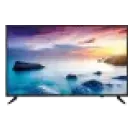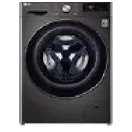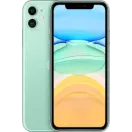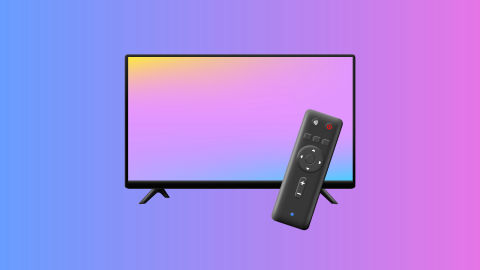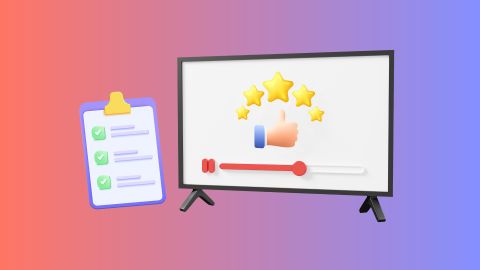If you are looking to buy a new TV, check out the TV range on Bajaj Mall. Alternatively, visit our partner stores to discover a wide selection of various renowned brands. Visit the nearest Bajaj Finserv partner store and explore the wide range of options available. Select the TV that suits your preferences and convert its cost into Easy EMIs. You can choose to repay it in a convenient tenure of up to 60 months. This financing solution from Bajaj Finserv is available on 1 million products.
3 min
25-Dec-2024
The main difference between H.264 and H.265 lies in compression efficiency. H.265 offers about 50% better compression than H.264, meaning it delivers the same video quality at half the file size. This makes H.265 ideal for streaming and storage where file size matters. However, H.264 remains the more widely compatible codec, especially for older devices and software. For optimal quality and efficiency, H.265 is the better choice, but H.264 is still reliable for compatibility.
If you are looking to buy a new TV, check out the TV range on Bajaj Mall. Alternatively, visit our partner stores to discover a wide selection of various renowned brands. Visit the nearest Bajaj Finserv partner store and explore the wide range of options available. Select the TV that suits your preferences and convert its cost into Easy EMIs. You can choose to repay it in a convenient tenure of up to 60 months. This financing solution from Bajaj Finserv is available on 1 million products.
If you are looking to buy a new TV, check out the TV range on Bajaj Mall. Alternatively, visit our partner stores to discover a wide selection of various renowned brands. Visit the nearest Bajaj Finserv partner store and explore the wide range of options available. Select the TV that suits your preferences and convert its cost into Easy EMIs. You can choose to repay it in a convenient tenure of up to 60 months. This financing solution from Bajaj Finserv is available on 1 million products.
Introduction to video compression: H.265 vs. H.264
Video compression is a crucial process that reduces file sizes for easier storage and faster streaming, while maintaining video quality. H.265 (HEVC) and H.264 are the two most popular video compression codecs, each with its own advantages. H.265 offers superior compression, achieving the same video quality as H.264 but at half the file size, making it ideal for streaming high-definition content with limited bandwidth. However, H.264 remains widely used due to its compatibility across various devices and platforms. Understanding the differences between these two codecs helps you choose the right option based on your needs for quality, storage, and performance. For the latest new TV model options, explore the top choices available today.
If you are looking to upgrade your viewing experience, Samsung LED TVs are a great option that support H.265 for superior video quality and efficiency.
Visit the nearest Bajaj Finserv partner store and explore the wide range of options available. Select the TV that suits your preferences and convert its cost into Easy EMIs. You can choose to repay it in a convenient tenure of up to 60 months. This financing solution from Bajaj Finserv is available on 1 million products.
What is H.264 compression and how does it work?
- H.264 is a video compression standard: It reduces the size of video files while maintaining high quality. It is commonly used for streaming, video conferencing, and video storage.
- It works by removing redundant data: H.264 eliminates unnecessary information from video frames, encoding only the key data required to reproduce the video.
- It uses inter-frame compression: H.264 compares consecutive video frames and stores only the differences between them rather than storing each full frame individually.
- It supports high-quality video at lower bitrates: H.264 can compress videos without significant quality loss, making it ideal for streaming high-definition content, such as on YouTube and Netflix.
- It is widely compatible: Haier TV is supported by most modern devices, including smartphones, tablets, and smart TVs, ensuring seamless playback across various platforms.
What is H.265 compression, and how does it work?
- H.265 (HEVC) is a video compression standard: It improves upon H.264 by offering better compression rates, allowing for higher-quality video at smaller file sizes.
- It uses advanced encoding techniques: H.265 reduces the data needed to store video by compressing the video more efficiently, especially for high-resolution videos like 4K and 8K.
- It applies intra-frame and inter-frame compression: Similar to H.264, H.265 uses inter-frame compression by storing only the differences between frames, but it also improves how individual frames are compressed.
- It offers up to 50% better compression than H.264: This means you can store or stream the same video quality at half the file size of your TCL TV, making it ideal for high-definition and high-bitrate content.
- It requires more processing power: Although H.265 offers better compression decoding, it requires more processing power, which can be a limitation on older devices or hardware.
Key differences between H.264 and H.265
- Compression efficiency: H.265 offers up to 50% better compression efficiency than H.264, meaning it requires less data for the same video quality, which translates to smaller file sizes.
- File size: H.265 compresses videos at a smaller file size without sacrificing video quality, especially for high-definition and 4K content. In contrast, H.264, while widely compatible, may require larger file sizes for similar quality video.
- Compatibility: H.264 is supported by most devices, making it the most popular choice for streaming and video playback. However, H.265 requires more advanced hardware support, which limits its use to newer devices and software.
- Performance: H.265 is particularly advantageous for streaming high-definition content, as it maintains video quality while reducing bandwidth usage. This makes it ideal for services like Netflix and YouTube, where bandwidth is a concern.
- Processing requirements: While H.265 offers better compression, it also requires more processing power for video decoding, which can affect playback on older devices.
Efficiency and file size comparison: H.264 vs. H.265
H.265, also known as HEVC (High-Efficiency Video Coding), significantly improves upon the H.264 standard by offering better compression efficiency without sacrificing video quality. While H.264 remains the most widely used codec due to its broad compatibility, H.265 achieves up to 50% better compression efficiency, meaning it uses less data for high-definition video content. This allows for smaller file sizes while maintaining video quality, making it ideal for streaming services and high-quality video content on platforms like Netflix and YouTube. However, H.265 requires more advanced hardware support, which can be a limitation on older devices. Despite these advantages, H.264 remains a reliable choice due to its widespread support and compatibility across various devices.If you are looking to upgrade your viewing experience, Samsung LED TVs are a great option that support H.265 for superior video quality and efficiency.
Visit the nearest Bajaj Finserv partner store and explore the wide range of options available. Select the TV that suits your preferences and convert its cost into Easy EMIs. You can choose to repay it in a convenient tenure of up to 60 months. This financing solution from Bajaj Finserv is available on 1 million products.
Explore TVs on EMI with Bajaj Finserv
Delve into desired TV features on Bajaj Mall. Once you have gathered all the necessary details, visit the nearest Bajaj Finserv partner store to pick your preferred TVs. Complete your purchases with Bajaj Finserv’s financing options, which set a predefined spending limit. Moreover, you can select a convenient repayment term, making the cost manageable with EMIs. Bajaj Finserv provides financing solutions for a range of electronics as well.Benefits of shopping with Bajaj Finserv’s financing options
- Affordable pricing: Pay less for premium TV when you shop at Bajaj Finserv partner stores, where affordability meets quality.
- Easy EMIs: Spread out your payments for the TV over time with Bajaj Finserv’s Easy EMIs, offering financial flexibility.
- Zero down payment: Skip the upfront payment. Certain TV models come with a zero down payment option, letting you start paying later.
- Wide range and accessibility: Discover a broad selection of TV across Bajaj Finserv partner outlets, making it easy to find the right one for your home.
- Special deals and cashback: Earn cashback and unlock special offers when you buy a TV through Bajaj Finserv’s financing options, giving you extra savings.
- Free home delivery available: Get complimentary home delivery on select TV models for a hassle-free shopping experience.
Televisions
TVs by size
TVs by budget
TV comparisons
Bajaj Finserv App for all your financial needs and goals
Trusted by 50 million+ customers in India, Bajaj Finserv App is a one-stop solution for all your financial needs and goals.
You can use the Bajaj Finserv App to:
Apply for loans online, such as Instant Personal Loan, Home Loan, Business Loan, Gold Loan, and more.
You can use the Bajaj Finserv App to:
Apply for loans online, such as Instant Personal Loan, Home Loan, Business Loan, Gold Loan, and more.
- Explore and apply for co-branded credit cards online.
- Invest in fixed deposits and mutual funds on the app.
- Choose from multiple insurance for your health, motor and even pocket insurance, from various insurance providers.
- Pay and manage your bills and recharges using the BBPS platform. Use Bajaj Pay and Bajaj Wallet for quick and simple money transfers and transactions.
- Apply for Insta EMI Card and get a pre-approved limit on the app. Explore over 1 million products on the app that can be purchased from a partner store on Easy EMIs.
- Shop from over 100+ brand partners that offer a diverse range of products and services.
- Use specialised tools like EMI calculators, SIP Calculators
- Check your credit score, download loan statements, and even get quick customer support—all on the app.
Frequently asked questions
What is the main difference between H.264 and H.265?
The main difference lies in compression efficiency. H.265 offers up to 50% better compression than H.264, meaning it delivers similar video quality at half the file size, making it ideal for high-resolution content.
Which video compression format offers better quality?
H.265 offers better quality at smaller file sizes compared to H.264. It maintains higher resolution and detail, especially for 4K and HDR content, making it the superior choice for modern video needs.
Is H.265 compatible with all devices?
No, H.265 requires more advanced hardware for decoding and may not be supported by older devices. However, newer smartphones, TVs, and media players typically support H.265.
Does H.265 reduce video file sizes more than H.264?
Yes, H.265 reduces video file sizes more effectively than H.264. It achieves similar quality at about half the size, making it ideal for streaming and storage, especially for high-definition videos.
Can I use H.264 to stream in 4K resolution?
While H.264 can be used for streaming in 4K, it is less efficient than H.265. H.265 is preferred for 4K streaming because it compresses video more efficiently without compromising quality, especially on lower bandwidth.
Show More
Show Less
